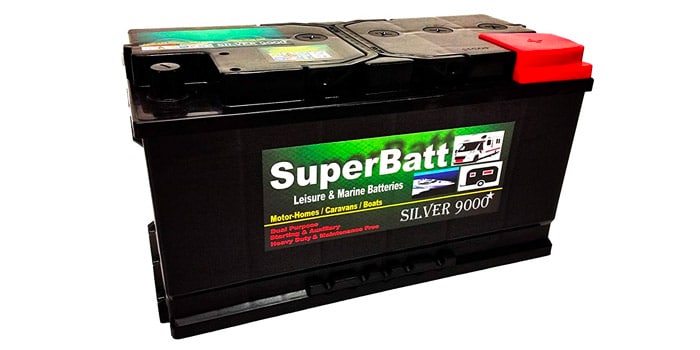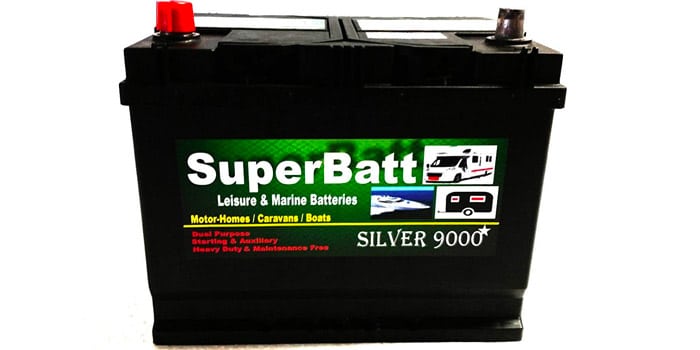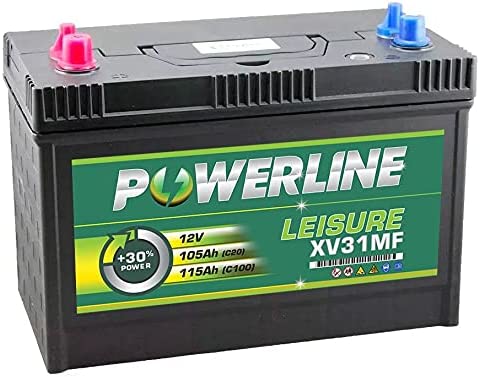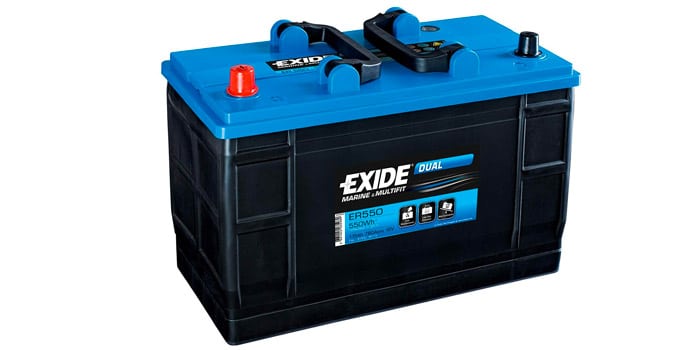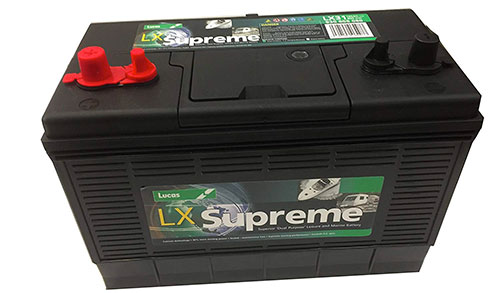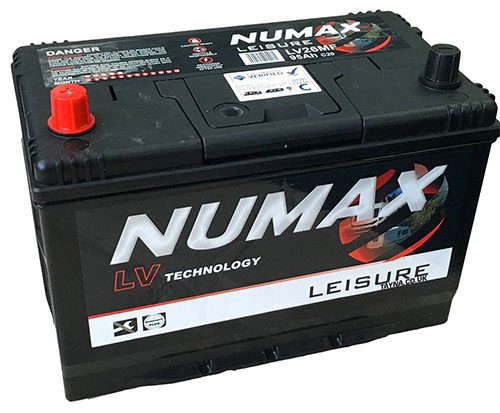Regardless of whether you are a clueless newbie trying to navigate through a sea of new terms and phrases or a veteran of the tourer world. Even if your campsite has an electric hook-up dealing with a leisure battery on a regular basis is part and parcel of caravanning or owning a motorhome or campervan.
In the following post, therefore, we are going to help you. Not only will we discuss some of the best ones available on the market right now and some practical accessories to consider, but we will also shed some light on what to consider when choosing the best leisure battery in our buyer’s guide.
Why Trust Us?
We have done hours of research and looked at reviews from all over the internet and compiled them into 1 big article. Choosing the right one is more important than ever as we are all using a lot more battery-powered items than we were 10 years ago.
Table of Contents
What Are The Best Leisure Batteries In 2020?
Let’s take a look at the top 6 batteries that are available.
The first one we want to draw attention to is the SuperBatt Deep Cycle 12 volts 110AH battery. This, like others from SuperBatt, is made to a very high standard and specification. It has been designed with what is known as ACT or Advance Calcium Technology that means these batteries are more robust and durable and require next to no maintenance. Especially when compared to other leisure batteries on the market, according to the manufacturer.
Interestingly, this is being marketed as both a starter and auxiliary battery, though it is best suited in the long run as an auxiliary or leisure battery. The company behind the batteries have put their money where their mouth is and offer a 2 year warranty with this product.
The second one on the list we are highlighting is another from SuperBatt. This is a 12 Volts 85AH leisure battery and the main difference is the amp hours rating, which in this one as you can see is 85AH.
Much like other SuperBatt products, it has been made to meet a high quality specification and standard and features Advance Calcium Technology for a more durable and robust and require virtually no maintenance at all. Especially if you compare it with others on the market at the moment, at least according to the manufacturer – though customers appear to be more than happy with it’s performance.
Curiously, it is marketed as a dual purpose battery, meaning it can perform the functionality of both a starter battery and an auxiliary one. Further to this, the manufacturers offer a full 2 year warranty on this model as well.
The next caravan battery we are going to look at is the Powerline 12 volts 45 aH model. Although there is not a lot to say about this product, the customers who have bought it and reviewed it feel it was just what they needed.
It has a good reputation for reliability and a long-lasting amount of power. If you are therefore looking for a good quality, affordable leisure battery for your caravan, this could be a good purchase.
Finally, the last actual leisure battery we are going to discuss is the dual leisure battery from Exide – the ER550 model. Although there is not a lot to say about this leisure battery either, it is made by Exide, which means it has the benefit of 130 year’s worth of experience behind it.
Most people usually opt for a single purpose battery, but these are worth considering at the very least.
This is another deep cycle leisure battery. This battery claims to be able to handle over 500 recharges which truly is amazing when you consider some others can only handle up to about 150.
Overall this is a great choice as a good all-round battery which will power your 12v appliances but it will put a bigger dent in your pocket compared to some of the others on the market.
This is an NCC verified leisure battery which means that its one you can trust. This is one of the weaker batteries on the list at only 75AH. However, it is more than capable for small caravans and motorhomes.
We recommend you have a deeper look into Numax batteries as they really are a great brand and offer a wide range of batteries suitable for everyone’s needs.
What Exactly Is a Leisure Battery?
Essentially, it is the power source that allows you to run all those 12 volts electrical appliances and appliances you use or intending on using in your motor-home or caravan. They have been designed specifically to provide a reliable and constant stream of power for an extended amount of time and are used by a wide variety of appliances and accessories such as ovens, kettles, televisions and lights to name a few. They are essential for if you are going off-grid caravanning.
In other words best caravan batteries play a pivotal role in ensuring your caravan or motor-home is a habitable and comfortable place to stay in and is not just a vehicle to get you from a to b.
You need to remember though that new-build caravans do not come with leisure batteries pre-installed; though you might get one in a new motor-home. Which is why this page is a vital resource.
Differences Between A Leisure Battery And A Car Battery
The short answer is no. The caravan battery and leisure battery are 2 completely separate sources of power. Although you could, at a push, use either of these in place of the other for a short period of time, it is not advised because of how they generate energy.
A leisure battery releases a very low level of energy for a longer duration to power the appliances, while a car battery has been designed specifically to generate a large spark of energy in order to start the car engine.
Because of these differences, they are not actually constructed in quite the same way. Typically, car batteries have different separators and thinner plates, meaning it is not well enough equipped to handle usage of more than a short period of time even if it was producing a lower amount of energy. Interestingly, a kind of battery has been produced that performs both the functions of a leisure battery and a caravan battery well. However, this is rarely actually used.
Some Further Considerations About Leisure Batteries
In addition to the information we’ve included in this post and the mini overviews of some of the products we think are best from the selection on the market right now, we felt it was a good idea to furnish you with some more information.
We understand the whole subject can be somewhat intimidating, so we have put together a mini guide to some other considerations we feel you should take on board when choosing the best leisure battery.
Different Types of Leisure Battery
Predominately, you will find that leisure batteries are lead-acid, but within that main battery type, there are a few different variations available that it is important to understand. It is also important to note that battery technology is getting better all the time. After discussing those, we will also look at some alternatives to traditional lead-acid batteries.
- Starter Batteries – Also often referred to as cranking or calcium batteries.
- Leisure Batteries – Also often referred to as deep-cycling or auxiliary batteries.
- Traction and Semi-Traction Batteries – Also often referred to as deep-cycling batteries.
With the standard lead-acid batteries covered, it’s now time to look at some interesting and useful alternative leisure batteries.
Gel Batteries
Gel Batteries are most commonly used in quad bikes and jet skies, vehicles that have a higher risk than normal for crashing. Why are gel batteries used? Using gel in the battery eliminates much of the risk of there being damage caused if the vehicle is tipped over and reduces the risk of corrosive acid leaking out and causing injury.
Although a rarity in British built caravans, there are some imported models of motor-homes and caravans that have gel batteries fitting into them to provide additional protection if an accident happens.
AGM Batteries
These were briefly mentioned closer to the top of the page. Absorbent Glass Mat or AGM batteries are made up of compressed glass fibre and lead plates in each individual cell and constructed using very specific manufacturing procedures.
This is to help build batteries that will last far longer than traditional lead-acid models. Furthermore, as noted earlier, AGM batteries are much more versatile because they can withstand a higher amount of charge cycles, making them perfect for both leisure and starter batteries.
Maintenance-Free Batteries
You may be asking – what are maintenance-free batteries? Well, you often lead-acid batteries are designed with removable caps that allow you to check and then top them up with deionised water. Maintenance-free batteries are sealed and therefore can’t be topped up, but as most batteries are not charged over 14.6 volts, they rarely need topping up anyway.
Incidentally, if you are using a battery with a voltage over 14.8 Volts, then you should check it regularly to ensure there is a high enough level of electrolytes in it and replenish it as required.
Safe Handling of Lead-Acid Batteries
AS batteries are very flammable and consist of highly corrosive acid, when you handle them you should follow the best safety practices.
- Make sure batteries are mounted properly and that the appropriate vent to allow gas to safely escape is fitted correctly always.
- Make sure you wear protective eye equipment and safety clothing when inspecting batteries.
- Make sure you always connect high quality clamps to batteries, as this helps to reduce and even eliminate the chance of sparks and fires from occurring. NB. Crocodile clips are not recommended as permanent connections.
How To Get The Most Out Of Your Best Leisure Battery
There are certain things you can do and practices you can follow that will help you to get the most out of your battery, like:
- Applying a thin layer of grease or Vaseline onto the terminals of the battery
- As previously noted, only use clamps that are of a high quality
- Make sure the steel does not rust on the contact surfaces if you are using clamps that are spring-loaded
- Check the electrolyte levels in the battery regularly, to ensure it covers the lead plates. If it isn’t, then you need to top it up with some deionised water. You should always wear safety equipment and clothing when carrying out maintenance and checks on a battery.
- Regularly check that the gas relief tube is fitted properly and securely
- Whenever your battery falls below 50% power, you need to recharge it. It is important that you never allow it to completely run out of energy, as this will significantly shorten its lifespan.
- If your caravan or motor-home is going to be left in storage or anywhere else, unused for an extended period, you need to make sure you take proper care of the battery. In these situations, it is a good idea to invest in and use a trickle charger.
- Avoid leaving a battery uncharged. Sulphation, a white deposit, starts to form on its plates if a battery is left uncharged for too long. This will eventually make the battery useless. Keep it as fully charged as you can.
- It is crucial that you understand that a battery requires a charger that has an output equal to or more than 10% of the battery’s full capacity. For instance, a 90ah battery needs a 9 amp charger at the very least, because anything less than that will reduce its capacity considerably.
What Can Affect The Performance Of a Battery?
There are a number of different factors that can have an effect on how well it performs or not, including the following:
Temperature
The general rule of thumb is – the lower the temperature, or cooler it is, the poorer a battery will perform. The amp hours rating that batteries have is based on the temperature being 25 degrees Celsius and with every degree drop, there is a drop in the performance by 1%. For instance, if you have an 110ah battery, but the temperature is 15 degrees Celsius, it will be performing like a 100ah battery.
Age
Normally batteries do not last longer than approximately 5 years because of how much their performance levels decrease through being charged over and over. This is the same for most batteries.
Consumption
A battery that is used to run a lot of different appliances at the same time, will discharge much quicker and will need to be recharged more frequently. As a result, this frequent recharging will cause the battery to degrade quicker. If you are using the battery a lot get a powerful heavy duty one.
Size
The higher the number of appliances you need to power and if these are especially power-hungry appliances; the bigger the battery you invest in will have to be. For instance, caravan motor movers need larger batteries. It is also wise to consider when you travel in year, because of how much the performance decreases in colder weather.
Discharge Rate
The amp hours rating that the manufacturer provides for a battery is normally based on a 20 hours discharge time. There will be 2 or 3 different capacity levels. For example, 20 hour rate for 95ah, 5 hours rate for 80ah and 100 hour rate for 105ah.
Although the above factors can influence a battery’s performance, you need to keep in mind that there are various other aspects that come into play too. As a general practice, you should assume you will have to recharge it more often than the manufacturer’s calculations suggest so don’t forget to look at some battery chargers or a solar panel charging kit. A solar panel kit will be especially useful if you are off-grid while caravanning.
How Long Does a Leisure Battery Last?
Obviously, one of the main concerns you probably have when investing in leisure batteries is how long they will last. With the right level of care and maintenance, a lead-acid battery will last at least seven years and possibly even more. However, without proper care, you may be lucky to have one that lasts for one month. The most common cause for premature failure is leaving one in either a complete or partial state of discharge for longer than a couple of days.
When discharging lead-acid batteries, lead sulphate starts to build-up on the battery’s plates. When you start recharging though, that sulphate is transformed back into lead dioxide and lead. When it’s left for a longer period though, the sulphates start to crystallise, which makes it harder for it to be converted back. This is commonly known by the name ‘sulphating’ and reduces battery performance significantly.
